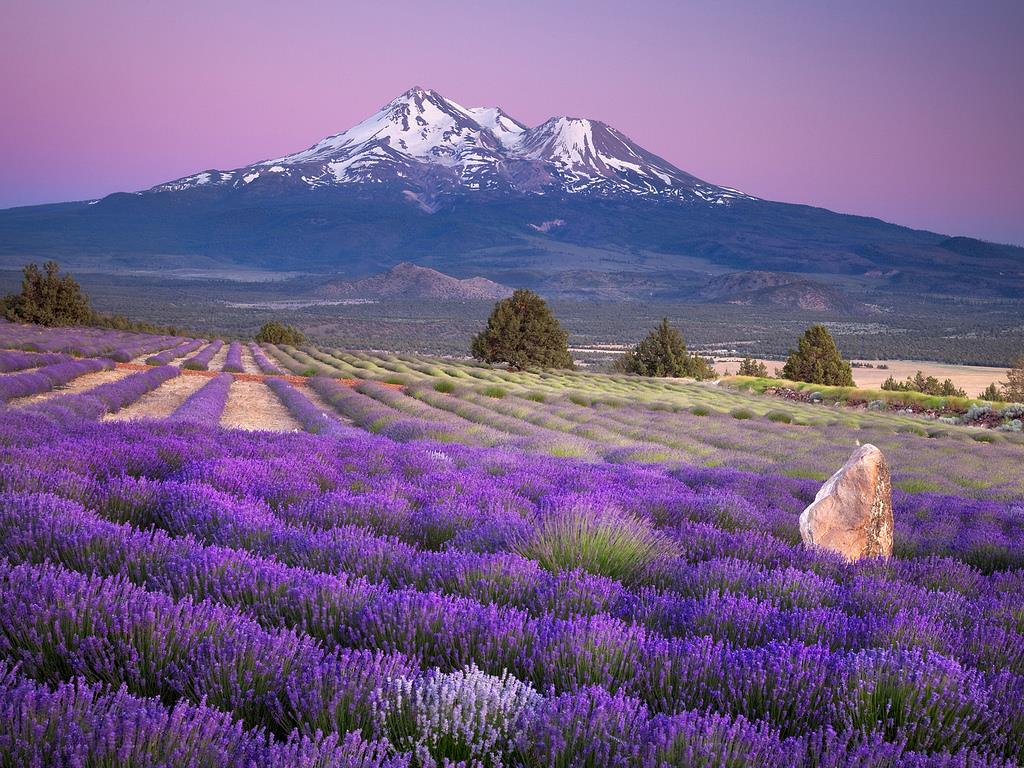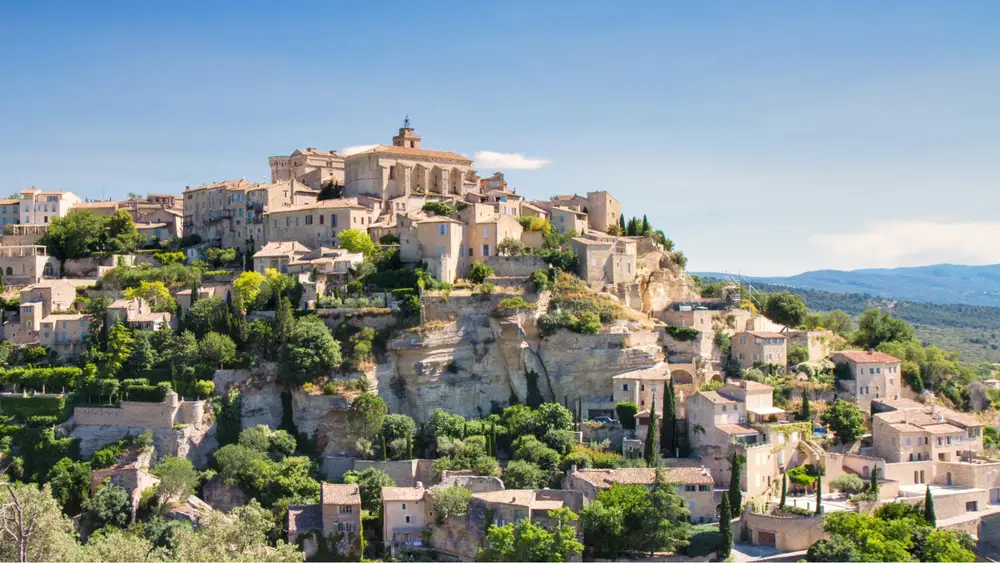Provence, France, is arguably the most renowned region in the country. Many travelers choose it as their destination not just because France offers relatively easy visa access, but also due to the breathtaking beauty of Provence. With its dreamy lavender fields, Provence captivates anyone who visits. So, what exactly is Provence? Let’s dive into this enchanting region through the article below!
1. Introduction to Provence, France
Provence is often dubbed the “lavender paradise” thanks to its vast fields of purple blooms stretching across the landscape. Unlike the dazzling Eiffel Tower or glamorous Paris, Provence offers a peaceful, serene escape from bustling city life, inviting you to embrace a tranquil existence alongside its warm locals. Nestled in southeastern France, Provence promises a delightful and unforgettable travel experience.
2. Famous Tourist Spots in Provence, France
2.1. The Dreamy Lavender Fields
A trip to Provence wouldn’t be complete without basking in the summer splendor of its lavender fields. Lavender is the soul and symbol of Provence, embodying romance and fidelity in love. These endless expanses of vibrant purple flowers paint the sky, their subtle fragrance wafting through the air. This iconic scenery has made Provence a must-visit destination for travelers worldwide.
Summer reigns supreme in Provence as lavender bursts into bloom. The fields, like shimmering purple silk swaying under golden sunlight, create a romantic tableau. Visit villages like Luberon, Gordes, or Valensole to immerse yourself in this lavender dreamscape. Peak bloom occurs from mid-June to August, making it the golden window for your visit—don’t miss it!
Location: Luberon, Gordes, or Valensole, Provence, France
2.2. Saint Paul de Vence Village
This ancient village feels like a painting brought to life. Located in southern France, Saint Paul de Vence charms with its quaint houses, cobblestone streets shaped like flowers, and unique stone street signs. Perched on a hill surrounded by vineyards and olive groves, it’s a haven of peace—perfect for unwinding after a hectic stretch. Pick up charming souvenirs here for 20–25 euros to share with loved ones!
Location: Saint-Paul-de-Vence, France
2.3. L’Abbaye de Sénanque Monastery
A must-see in Provence, this 12th-century monastery is a tourism icon. Known for its Romanesque architecture and surrounded by stunning lavender fields, L’Abbaye de Sénanque offers a serene retreat. Despite being burned and attacked over the centuries, it remains one of France’s most visited monasteries. Stroll through its lavender groves, admire the historic buildings, and soak in the tranquility.
Location: 84220 Gordes, Provence, France
2.4. Gordes Village
Clinging to the southern slopes of the Vaucluse Plateau, Gordes overlooks the picturesque Cavaillon Valley. Built around a medieval castle, this ancient village once shielded the valley from invaders. Its defensive walls, steep narrow lanes, arched pathways, fountains, and small churches exude a cozy, timeless charm that instantly feels like home.
Location: Les Savournins, 84220 Gordes, France
3. How to Get to Provence, France
France boasts a modern, convenient transportation network—think metro, buses, taxis, rental cars, and trains. Public transport is both affordable and practical for reaching Provence.
1. From Paris to Provence
From Paris, take a train or bus to Marseille in Provence, then explore further via the high-speed TGV network connecting major cities like Paris, Avignon, Nice, and Marseille.
By Train: The TGV Méditerranée departs from Paris Gare de Lyon to Aix-en-Provence throughout the day.
- Metro to Gare de Lyon: Line 1 (La Défense to Château de Vincennes) or Line 14 (Saint Lazare to Bibliothèque François Mitterrand)
- TGV Times: Paris to Aix-en-Provence (2 hours 59 minutes); Lille to Aix-en-Provence (4 hours 32 minutes); Charles de Gaulle Airport to Marseille Saint Charles, then Aix-en-Provence (about 5 hours total)
- Eurostar Option: Direct from London St. Pancras to Avignon, then a quick train to Aix-en-Provence or Marseille.
By Plane: Fly into Marseille-Provence Airport, 21 km south of Aix-en-Provence. Shuttles run regularly to Vitrolles-Les-Pinchinades, Aix-en-Provence TGV station, Les Milles – La Duranne, and central Aix-en-Provence (30-minute ride).
By Car: The 760 km drive from Paris to Aix-en-Provence takes 6–7 hours with tolls on the Autoroutes. You’ll pass through the scenic Vaucluse region—a rewarding journey through Provence’s countryside.
By Bus: Eurolines operates services from Paris to Aix-en-Provence and other Provençal cities like Marseille, Nîmes, Toulon, Avignon, and Nice.
2. From Marseille to Provence
By Train: From Marseille’s Gare de Saint-Charles to central Aix-en-Provence costs about 6.5 euros and takes 35 minutes.
By TGV: The 18 km Marseille-to-Aix-en-Provence TGV trip averages 12 minutes, with 8 daily departures starting at 6.4 euros.
By Bus: FlixBus, CarTreize, and Zou! LER run 31 km trips from Marseille’s Gare St Charles to Aix-en-Provence’s Gare Routière in about 38 minutes, costing around 6 euros.
3. From Nice to Provence
By Bus: The 188 km Nice-to-Aix-en-Provence route takes 3 hours via FlixBus and Zou! LER, departing from NICE – Gare Routière to AIX EN Pce – Gare Routière. About 43 weekly buses run, with schedules varying on weekends and holidays (first at 9:55 AM, last at 9:30 PM).
By TGV: The fastest option, TGV runs twice daily from Aix-en-Provence TGV to Nice Ville in 3 hours, hugging the Mediterranean coast. Alternatively, take a 50-minute TER from Gare d’Aix-de-Provence to Marseille, then a 2-hour-40-minute TGV to Nice Ville. Book TGV or OUIGO tickets online for the best rates.
By Car: Drive the scenic RN7 coastal road from Nice, passing Antibes, Cap d’Antibes, Juan Les Pins, and Golfe Juan. After Cannes, continue through Mandelieu la Napoule, Miramar, St Raphael, and Fréjus before heading inland to Aix-en-Provence.
4. Provençal Culinary Delights
4.1. Tapenade
Named after a Provençal term, this dish blends capers, olives, caper berries, and anchovies—finely chopped or mashed. A staple appetizer, it’s often spread on bread for a flavorful bite.
4.2. Socca
A multicultural treat, Socca is a flatbread made from chickpea flour, baked in an open oven. Seasoned with herbes de Provence and cracked black pepper, it’s a memorable taste of the region.
4.3. Salade Niçoise
This world-famous salad hails from Provence, featuring fresh tomatoes, boiled eggs, tuna, olives, and local anchovies, topped with a vinegar dressing tied to Mediterranean flavors.
4.4. Fougasse
A Roman-style flatbread, Fougasse is a French classic, but Provence’s version stands out. Packed with olives, cheese, and anchovies, it’s nicknamed “Provence Pizza” and graces many local menus.
5. Additional Services for Your Provence Trip
5.1. Photography Services
To capture Provence’s magic, book a private photography session. Timing is key—lavender blooms from late June to August. Plan your spot and time of day, but be prepared for surprises like rain or storms, which might delay your shoot and extend your stay.
5.2. Guided Tours
For those unfamiliar with Provence, guided tours are ideal. Various companies offer flexible options based on your schedule and budget, often pairing Provence with nearby gems like Plateau de Valensole, Gorges du Verdon, and Moustiers-Sainte-Marie. Book 10 days to a month ahead, especially in peak season, to secure a spot.
5.3. Car Rentals for Lavender Field Tours
Viewing lavender fields through a car window is a treat. Provence’s narrow roads favor small cars, so rent accordingly. Expect tolls when exiting highways—carry cash or cards like Visa, Eurocard, or Mastercard. From Aix-en-Provence, companies like Hertz, Avis, Europcar, and Sixt offer reliable options.
6. Frequently Asked Questions About Traveling to Provence
1. Can I use Wi-Fi in France? Yes, but unlike Vietnam, it’s rarely free. Check service terms to avoid unexpected charges.
2. How many days should I spend in Provence? Depending on time and budget, 3–5 days cover the highlights, though a longer stay offers deeper exploration.
3. When’s the best time to visit Provence? Provence shines year-round. Spring brings vibrant rose walls, May hosts a rose festival, but summer (June–August) is prime—dry weather and blooming lavender, jasmine, lilies, sunflowers, and violets make outdoor adventures perfect.
That’s your comprehensive guide to Provence, France! May it spark inspiration for your upcoming floral adventure. Questions? Drop them below—we’d love to help!











